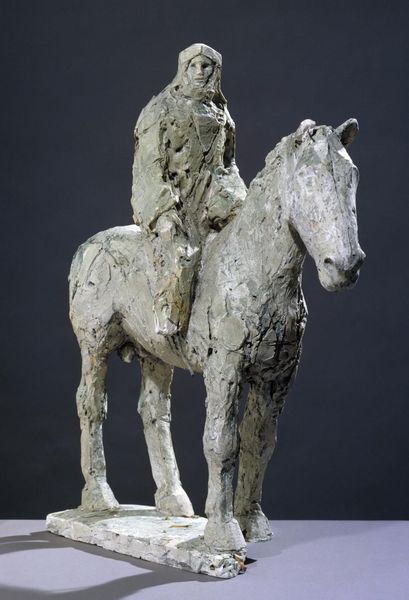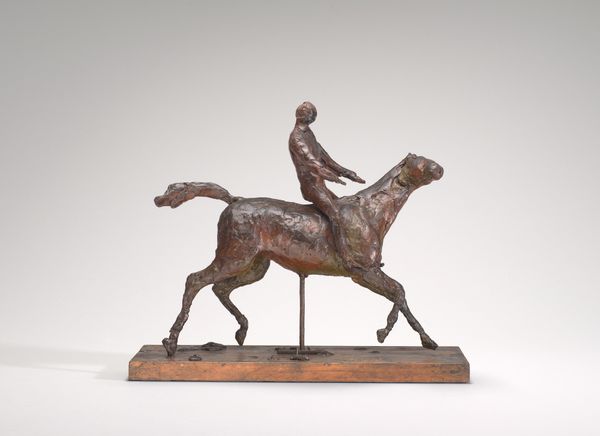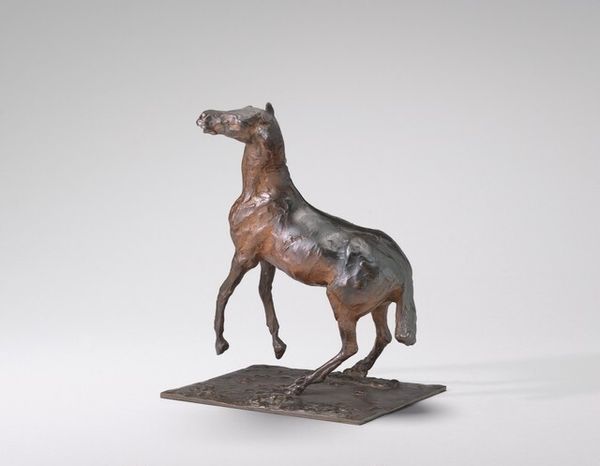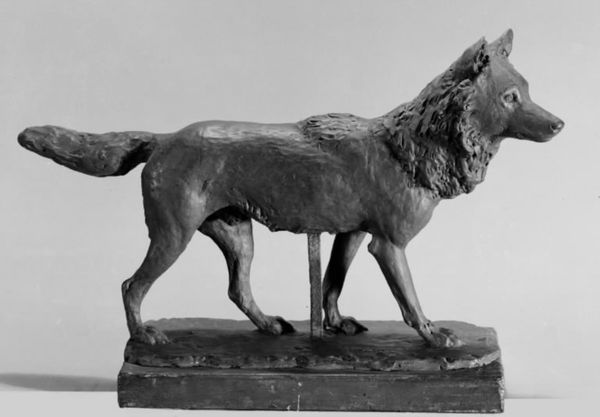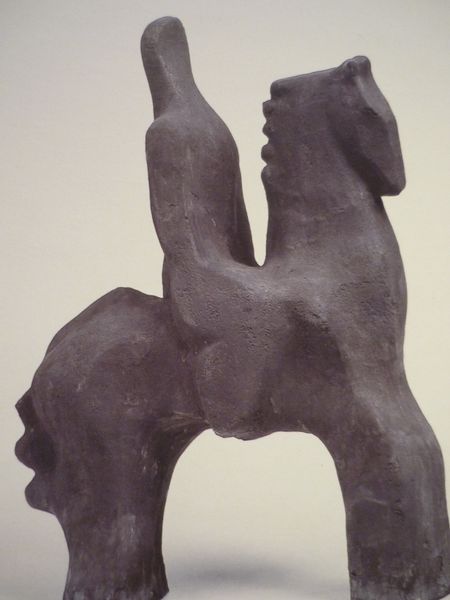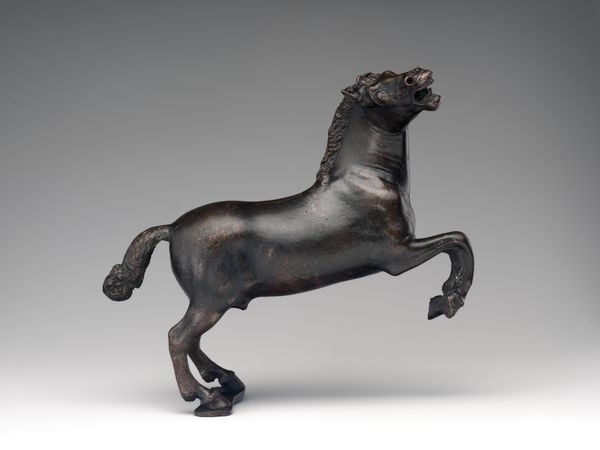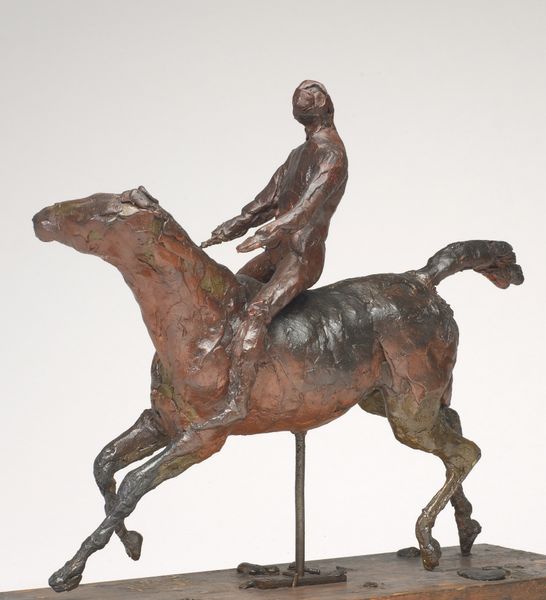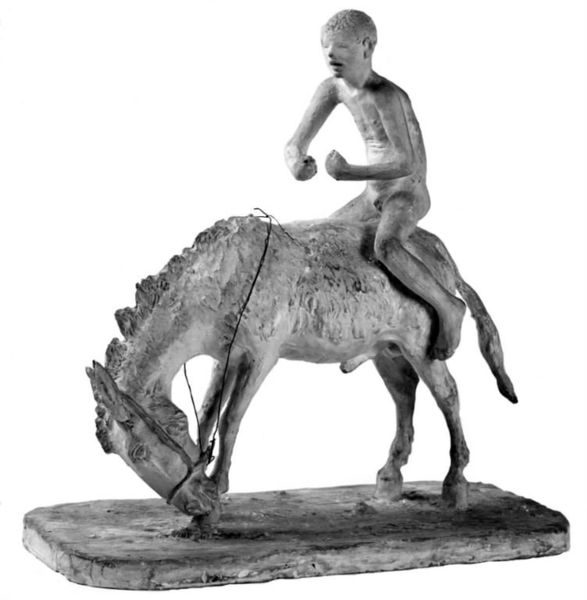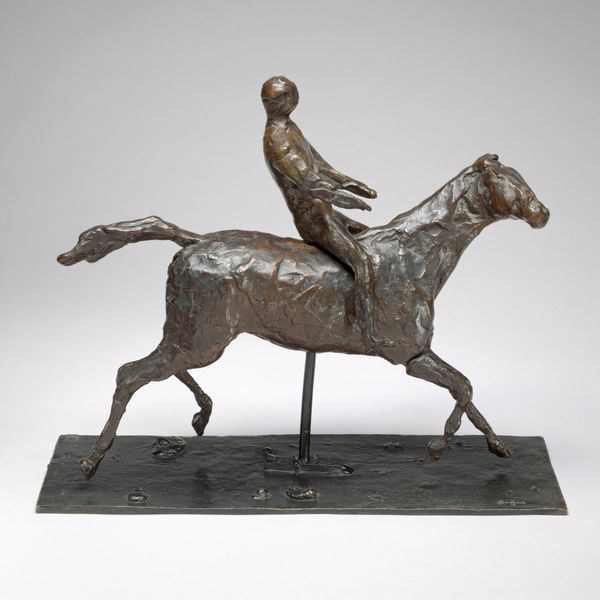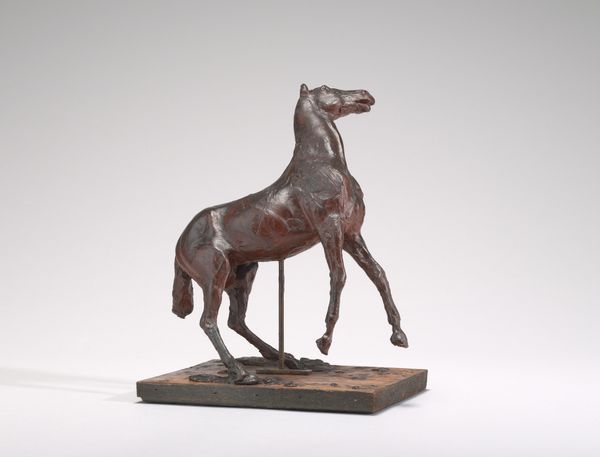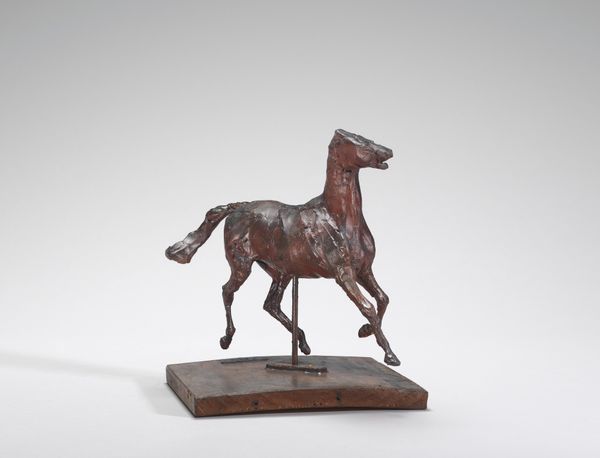
Dimensions: object: 1638 x 1549 x 673 mm
Copyright: © DACS, 2014 | CC-BY-NC-ND 4.0 DEED, Photo: Tate
Curator: Here we have "Horseman," by Marino Marini. Editor: It’s strangely unsettling; the horse looks stiff, almost mechanical, and the rider seems passive, disconnected. Curator: Marini repeatedly explored this theme. The motif became a symbol of humanity facing a changing, often turbulent, world, especially post-war. Editor: The rough texture and weighty material clearly speak to a sense of burden. You can imagine the physical labor involved in crafting this. Curator: Indeed. It reflects the anxiety prevalent in Europe at the time, a questioning of traditional values and heroic ideals. It's a very public facing, politically-charged piece. Editor: I see that—but for me, the focus is on the materiality. The tension feels inherent to the bronze, as if it's resisting being shaped, being ridden. Curator: The piece certainly invites multiple interpretations. Its power comes from that very ambiguity. Editor: Absolutely. I find its physicality and social underpinnings deeply compelling.
Comments
Join the conversation
Join millions of artists and users on Artera today and experience the ultimate creative platform.
tate 6 months ago
⋮
Marini produced his first equestrian works in the mid 1930s. He was inspired to do so by seeing sculptures of medieval knights on horseback in Germany. The subject symbolised for him a primeval or mythical harmony between man and nature. After the Second World War, however, his figures on horses often expressed anguish. This related to Marini's experience of seeing Italian peasants on frightened horses fleeing bombardment during the War. The artist wrote that this sculpture was 'the result of a sad period which Italy passed through during the War', and described it as 'enclosed in geometrical lines', and 'very precise in its tragic and human significance'. Gallery label, August 2004
